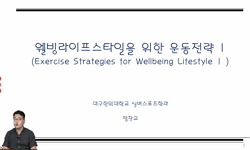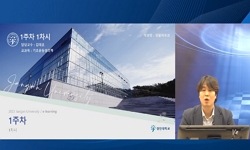This study investigated the effects of applying magnetic fields at varying intensities (1,000G, 1,500G, 2,000G) on body temperature in middle-aged men during the recovery period following exercise. Ten middle-aged men participated in the study. Measur...
http://chineseinput.net/에서 pinyin(병음)방식으로 중국어를 변환할 수 있습니다.
변환된 중국어를 복사하여 사용하시면 됩니다.
- 中文 을 입력하시려면 zhongwen을 입력하시고 space를누르시면됩니다.
- 北京 을 입력하시려면 beijing을 입력하시고 space를 누르시면 됩니다.
https://www.riss.kr/link?id=A109776037
- 저자
- 발행기관
- 학술지명
- 권호사항
-
발행연도
2025
-
작성언어
-
-
주제어
운동 ; 중년남성 ; 대체의학 ; 자기장 ; 피부온도 ; Exercise ; Middle-Aged Men ; Alternative Medicine ; Magnetic Field ; Skin Temperature
-
KDC
300
-
등재정보
KCI등재
-
자료형태
학술저널
-
수록면
41-49(9쪽)
- DOI식별코드
- 제공처
-
0
상세조회 -
0
다운로드
부가정보
다국어 초록 (Multilingual Abstract)
This study investigated the effects of applying magnetic fields at varying intensities (1,000G, 1,500G, 2,000G) on body temperature in middle-aged men during the recovery period following exercise. Ten middle-aged men participated in the study. Measurements were repeated three times for each of the three magnetic field intensities to assess pre- and post-application changes and group interactions. Data were analyzed using SPSS version 27.0, applying paired t-tests and two-way ANOVA. Post-hoc comparisons were performed using Duncan's multiple range test. The main findings are as follows. First, significant changes in body temperature were observed before and after the application of magnetic fields at 1,500G and 2,000G during the recovery period (p < .05). Second, significant interaction effects were observed among the three groups after application and over time (p < .05). In conclusion, magnetic field intensities of 1,500G and 2,000G appeared to be the most effective for inducing changes in body temperature during the post-exercise recovery period. Future research should build on these findings by exploring how varying magnetic field intensities affect a broader range of physiological responses in the human body.
동일학술지(권/호) 다른 논문
-
간호 대학생의 네트워킹 행동과 전공몰입이 진로준비행동에 미치는 영향
- 대구과학대학교 국방안보연구소
- 노주희(Ju Hee Nho), 박숙경(Sook Kyoung Park)
- 2025
- KCI등재
-
국방혁신 4.0 정책의 비판적 고찰: 법적·제도적 관점을 중심으로
- 대구과학대학교 국방안보연구소
- 홍준기(Jun Ki Hong)
- 2025
- KCI등재
-
노인 평생교육 참여도와 생활만족도가 성공적 노화에 미치는 매개효과 분석
- 대구과학대학교 국방안보연구소
- 문성재(Seong Jae Moon), 홍세영(Se Young Hong), 여관현(Kwan Hyun Yeo)
- 2025
- KCI등재
-
직급에 따른 임상간호사의 육아휴직 제도 인식 및 개선 요구 분석
- 대구과학대학교 국방안보연구소
- 배현지(Hyun Ji Bae), 김윤영(Yunyoung Kim)
- 2025
- KCI등재





 KCI
KCI 스콜라
스콜라






